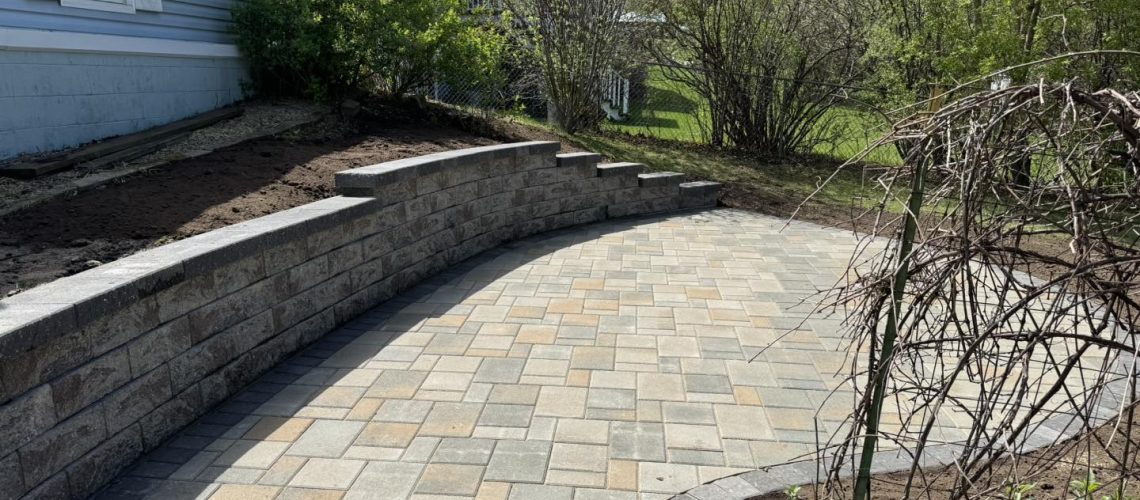If you’re getting ready to install natural stone pavers, one of the first questions that might come up is:
“Should I put plastic underneath the pavers?”
It’s a common idea—people often think plastic sheeting will help block weeds or keep water from coming up through the ground. But in most cases, putting plastic under your pavers is not recommended, and here’s why.
The Problem with Using Plastic Under Pavers
At first glance, plastic seems like a practical solution. It’s inexpensive, easy to install, and forms a complete barrier between your pavers and the soil below. But this barrier can quickly become a problem. Here’s what can go wrong:
1. Poor Drainage
Natural stone pavers are often used in outdoor spaces like patios, walkways, or driveways—areas that need good drainage. When you install plastic sheeting underneath the pavers, water can’t drain properly through the base. Instead, it sits on top of the plastic layer and gets trapped.
This standing water can lead to:
-
Erosion of your sand or gravel base
-
Shifting or sinking pavers
-
Cracking over time, especially in freeze-thaw conditions
2. Weed Growth Still Happens
A lot of people use plastic to try to stop weeds from growing between their pavers. While it may slow weeds down temporarily, plastic doesn’t eliminate weeds entirely. Seeds can still blow in from above, settle into the joints between pavers, and grow in the sand. The plastic underneath won’t stop that kind of surface growth.
3. It Can Affect the Longevity of Your Pavers
Natural stone is durable, but it still needs a proper foundation. By interrupting the natural drainage and ventilation with plastic, you could be shortening the lifespan of your installation and creating long-term issues that are costly to fix.
What to Use Instead of Plastic
If plastic isn’t the right choice, what is the best material to put under natural stone pavers? Here’s the standard recommended layering system for a stable, long-lasting base:
✅ Compacted Base Layer (Gravel or Road Base)
This provides structure and support. Typically 4–6 inches thick and well-compacted.
✅ Leveling Layer (Concrete Sand or Bedding Sand)
Roughly 1 inch thick, this layer lets you fine-tune the level of each paver.
✅ Optional: Geotextile Fabric
If you’re concerned about weeds or soil mixing into your base, geotextile fabric is a great alternative to plastic. This breathable fabric allows water to drain through, while still helping to reduce weed growth and maintain the structure of the base material.
Bonus Tip: Use Polymeric Sand for the Joints
To help prevent weeds and keep everything locked in place, consider using polymeric sand between your pavers. It hardens when wet and helps minimize weed growth from the top, where most weeds actually start.
Final Thoughts: Skip the Plastic, Build It Right
When installing natural stone pavers, it’s tempting to cut corners with materials like plastic sheeting. But in the long run, it’s not worth it. Plastic can trap water, weaken your base, and create costly issues down the road.
For a durable, professional-looking paver installation, stick with a properly built gravel and sand base, and consider using geotextile fabric if you want added protection against weeds. Your pavers—and your wallet—will thank you later.
Need Help Planning Your Project?
We specialize in natural stone pavers and can help you choose the best materials for your space. Whether you’re a homeowner tackling a DIY job or a contractor working on a large project, feel free to reach out or visit our stone yard. We’re happy to help you build something that lasts.

